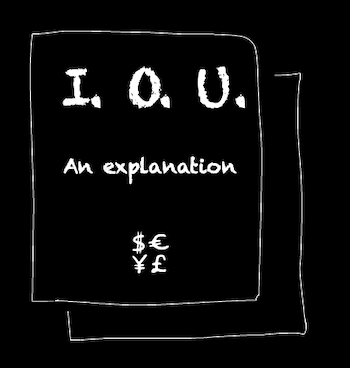This piece on how to save money on travel is by The Treasurer from Team Monevator. Check back every Monday for more fresh perspectives on personal finance and investing from the Team.
Since joining the corporate world, I’ve spent less than I’ve earned. It comes naturally to me, as does a desire to save 30-50% of my net income each month.
Even when I do spend money, I aim to get as much value as I can. I avoid impulse spending. I don’t buy the latest gadgets or the most expensive phone.
Being an avid reader of Monevator, I know I’m not alone in this philosophy!
Yet I wouldn’t consider myself a tightwad. There’s a balance to be had between becoming financially independent and enjoying your prime years.
For this reason, I mainly focus my frivolous spending on one thing – solo travel.
At this point I should acknowledge that solo travel isn’t for everyone. That’s why I’m not going to suggest it ‘broadens the mind’, or helps you ‘find yourself’. Such comments can be rather tiresome.
Yet for me, the more I travel, the more I convince myself that it’s one of the best ways for me to spend my money. In terms of the cost to enjoyment ratio, nothing comes close.
Cheap accommodation…
As you can probably guess, my idea of travel isn’t five-star hotels or first class plane tickets. I’m more of a budget airline, bargain hostel type.
Happily, while I’d probably enjoy a few nights in a luxury resort, one of the big draws of travel for me is meeting people and sharing experiences. So I don’t see opting for a hostel over a hotel as much of a compromise.
Luckily, hostels are generally cheap. I’ve stayed in tonnes of them across six continents, with prices ranging from £5 to £25 per night, depending on the country. To book I typically use Hostelworld, but I often check with a hostel directly to see if they can give a discount.
If a shared room isn’t for you, many hostels offer cheap private rooms, too.
When I say I stay in hostels, many people flinch at the thought. Yet stay in a hostel with a good rating (at least eight out of ten on Hostelworld or TripAdvisor) and I’m confident any negative preconceptions will vanish.
That said, I won’t criticise anyone who opts for a cheap hotel or AirBnb instead.
…and bargain flights
As for getting there, I use scraper services such as Skyscanner. I play around with the ‘whole month’ option to maximise the chances of a deal.
If I’m unsure about where to travel to – or if I’m in a bargain-hunting mood – I’ll often select the destination as ‘everywhere.’ This shows the cheapest places to fly to in any given month. It’s led me to a £20 weekend return to Timișoara, Romania, and a £30 trip to Bydgoszcz, Poland. (A hidden gem!)
If I’m planning a long trip, I’ll look into open-jaw flights. This involves flying into one airport and out of another.
Open-jaw flights often don’t cost any more than a typical return ticket. And they can save the need for backtracking, which can save both time and money.
Google Flights is good for playing around with open-jaw options. Use its ‘multi-city’ drop down box.
More tips on how to save money on travel
With the biggies out of the way, here are eight more personal finance travel tips to help you save some dollars, dinar, or dong when you next go abroad.
Get yourself a top travel card
If you use your normal debit or credit card while abroad, you’re likely paying for the privilege. Many cards charge a non-sterling transaction fee every time you use your card – typically 3% – as well as charging for overseas cash withdrawals.
To avoid these hefty fees, bag yourself a specialist card with no extra charges when you use it abroad.
If you’re happy to open a new bank account, Starling Bank doesn’t have any fees for spending on your card abroad. It also offers fee-free overseas cash withdrawals. You can make six withdrawals or withdraw up to £300 each day. That should be sufficient for most of us.
Alternatively, Virgin Money’s new ‘M’ account offers fee-free overseas usage, with no spending or overseas cash withdrawal fees. As an incentive, it’ll give you a £150 Virgin experience day voucher if you switch to the account.
If instead of opening a bank account you’d prefer a credit card, then Halifax Clarity (19.9% rep APR) offers fee-free spending and withdrawals overseas. Plus if you use the card within 90 days, Halifax will pay you a cool £20. You will have to pay daily interest on cash withdrawals though, so it’s best to spend on the card if you can.
Barclaycard’s Rewards Visa (22.9% rep APR) also offers fee-free spending and cash withdrawals. Plus it pays 0.25% cashback on most spending.
If you do opt for a credit card, always, always set-up a direct debit to repay your balance in full. That way you avoid paying interest on purchases. If you don’t, you’ll wipe out any savings you make from using them abroad.
Bag a free GHIC for European trips
You can get a Global Health Insurance Card (GHIC) provided you live in the UK. Holding one entitles you to the same medical treatment in public hospitals as a normal citizen living in the EU. If you fall ill while on a European trip, having a GHIC in your pocket could be a literal life-saver.
Applying for a GHIC is free. If you haven’t already got one, you can apply on the NHS website.
The GHIC is a replacement for the old EHIC (European Health Insurance Card), introduced as a result of Brexit. If you already have a EHIC then you can continue to use it until it expires.
Having a GHIC does not necessarily mean you’ll receive free medical treatment abroad. Some EU countries require citizens to pay for medical treatment. Having a GHIC only entitles you to hospital access at the same rate as locals.
That’s why the GHIC shouldn’t be used as an alternative to travel insurance. Which leads me to the next tip!
Get good travel insurance
Travel insurance is often seen as a grudge purchase – a necessarily evil. But heading overseas without travel insurance is like driving without a seat belt.
Anyone can have an accident while abroad. Say you get run over in a country with extortionate prices for medical treatment, such as the USA. If you don’t have travel insurance, you can forget about retiring early. You could instead face financial ruin.
The good news is that travel insurance can be relatively cheap, especially if you travel often and opt for a multi-trip policy. There’s no set policy that’s best for all. Use a price comparison site to compare the options.
Treat yourself to a free airport lounge pass
While not for everyone, the American Express Gold credit card gives two free airport lounge passes to cardholders. You can use these at more than 1,300 lounges across the world.
While not as luxurious as special airline lounges, they do provide a pleasant place to sit as you wait for your flight. You’re often treated to free food and drink, too.
The card also gives ‘Preferred Rewards Points’ as and when you spend on the card. This includes a 20,000 bonus if you spend £3,000 in your first three months. The card has a £140 annual fee, but the first year is fee-free. You don’t have to pay anything if you cancel before the anniversary of the first year.
As with any rewards credit card, set up a direct debit to pay off your balance in full each month. That way you can avoid having to pay extortionate interest. (56.6% rep APR variable).
I’ve used this deal myself and found it straightforward. For anyone flying out of London, the Luton lounge is a lot nicer than its Stansted cousin. You can visit Lounge Review to compare lounges.
Always pay in the local currency
When overseas, you’ll often be offered the chance to pay in pounds instead of the local currency. While this may seem like a kind offer, it is really a wheeze known as ‘dynamic currency conversion.’ It means the overseas retailer does the conversion for you, often at a terrible rate.
As long as you have a specialist debit or credit card, you’ll be far better off using that to pay in the local currency instead.
If you need cash, use a comparison tool
I’m a fan of going cash-free wherever possible. If I need cash – which can be near-unavoidable in some countries – I’ll use my Starling card to withdraw foreign currency while overseas. The biggest challenge is finding an overseas ATM that doesn’t charge.
Many people do prefer to have a wad of foreign notes in their wallet before heading away. If that’s you, don’t make the mistake of defaulting to your local Post Office. Instead use the services of a travel money comparison tool that will list the most competitive rates.
MoneySavingExpert’s TravelMoneyMax is the best one I’ve come across.
Plan your car hire
If you need to hire a car while abroad then it’s cheaper to book early, rather than paying at the airport desk.
It’s also worthwhile to decline any top-up insurance you’re offered when you collect your car. Instead sort this insurance out yourself through a separate policy to save money. MoneyMaxim is a popular service for this.
Consider a frequent flyer scheme
I’ve done the maths and joining a frequent flyer scheme isn’t worth it for me. I hunt down budget airlines and jump on promotional airfares as and when they arise, regardless of airline.
However if you often fly a particular route or you stick to one airline for whatever reason, do take the time to look into some frequent flyer schemes to see if you can rack up some air miles.
Research is the way to save money on travel
While I hope the above travel tips will be useful to the health of your wallet or purse when you’re overseas, the number one rule of planning the trip is to research before jetting off.
For instance, knowing the best way to get from the airport to your accommodation can be a real time and money saver.
I usually ask myself the following questions:
- Does Uber (or another taxi app) work in the country I’m flying to?
- Does Uber work from the airport? Or do I have to walk out of the airport onto a public road?
- Is the public bus or metro from the airport easy to use?
- Does local transport accept card payments?
- Are there any common scams to be aware of?
While you may think these questions are simplistic, I once had a friend visit me in London who decided to jump in a black cab from Gatwick Airport to central London. I heard similar stories of a couple getting a £100 taxi from Reykjavik airport to downtown. (Iceland can be notoriously expensive).
Other cost-cutting tips to bear in mind include heading away during off-peak times, traveling to places that don’t require a costly visa, and planning your accommodation in advance to avoid having to fork out for the last empty hotel room in the city.
If you’ve any tips I’ve missed or you’ve employed any of the above with success, then I’d love to hear from you in the comments section below.
You can see all The Treasurer’s articles in their dedicated archive.




